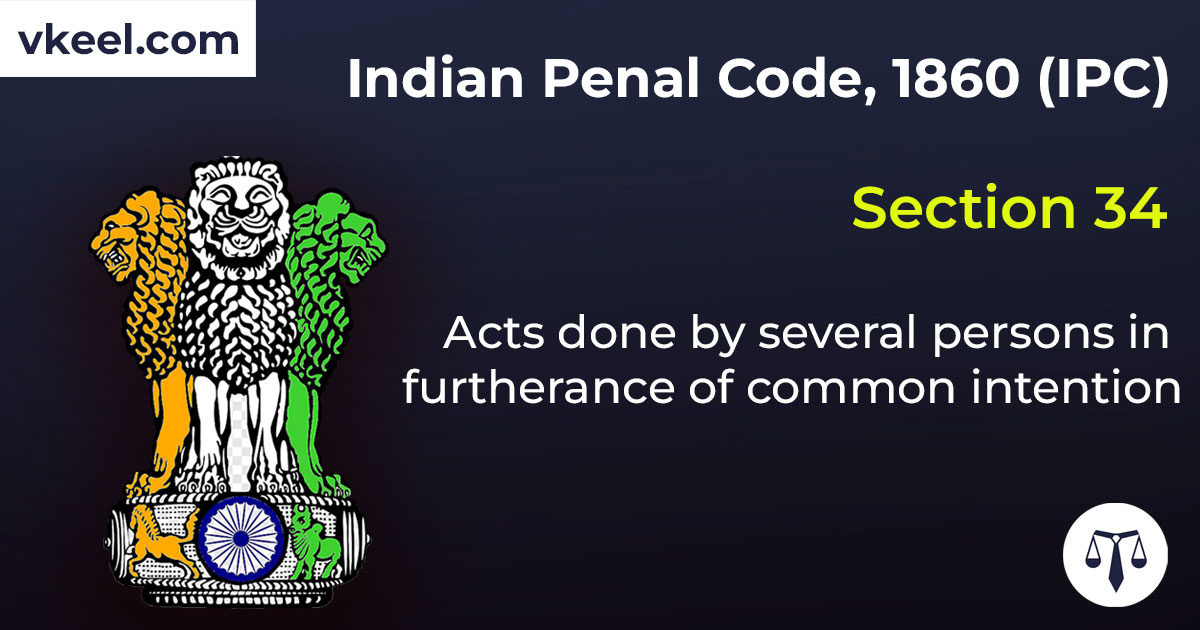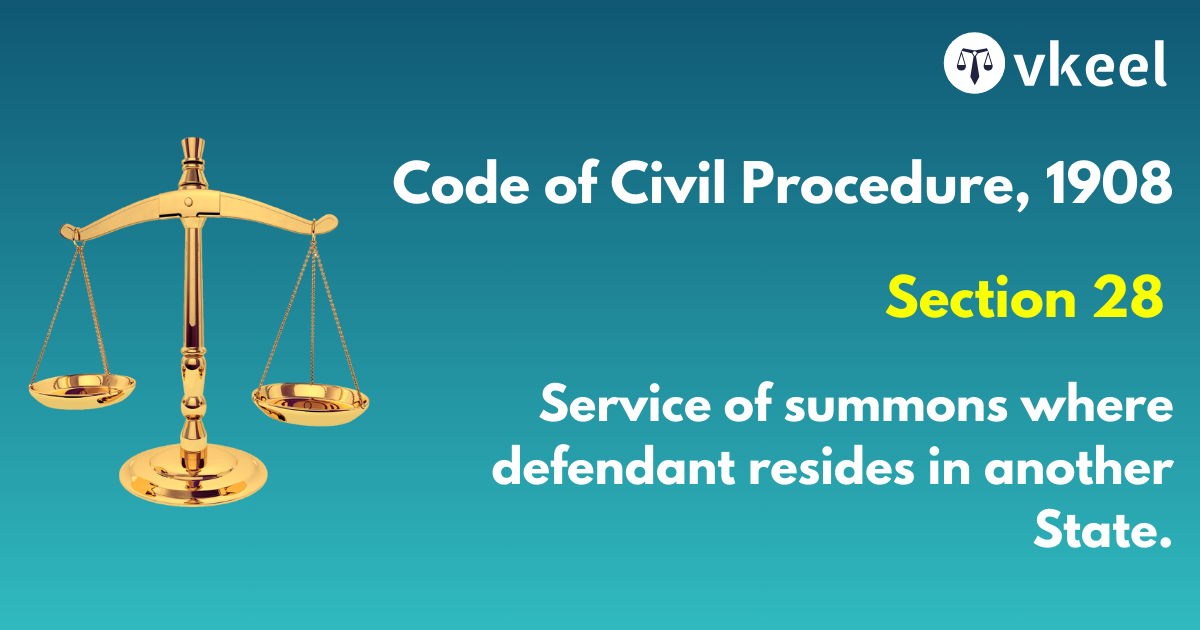Section 34 Indian Penal Code 1860 (IPC) – Acts done by several persons in furtherance of common intention
By Vkeel Team
Table of Contents
Description
“Section 34 Indian Penal Code 1860 (IPC)”
1[When a criminal act is done by several persons in furtherance of the common intention of all, each of such persons is liable for that act in the same manner as if it were done by him alone.]
What is Common Intention?
Common intention means a pre-arranged plan or a meeting of minds between two or more persons to commit a particular offence. It is not necessary that the intention should be expressed in words; it can be inferred from the conduct of the parties. For instance, if two persons are seen carrying weapons towards a house with the intention of committing a theft, their conduct would imply a common intention.
Essentials of Section 34 of the IPC
For Section 34 of the IPC to be applicable, the following essentials must be fulfilled:
- The accused persons must have acted in furtherance of a common intention.
- The accused persons must have committed the offence in question.
- The offence must have been committed by several persons.
Interpretation of Section 34 of the IPC
The Supreme Court of India has laid down the following principles while interpreting Section 34 of the IPC:
- Common intention must exist before the commission of the offence: The common intention must exist at the time of commission of the offence and not afterwards. If two persons decide to commit a theft and one of them commits the theft while the other does not participate, the latter cannot be held liable under Section 34 of the IPC.
- Common intention must be formed before the commission of the offence: The common intention must be formed before the commission of the offence and not at the time of the commission. For instance, if two persons enter into a house to commit a theft, and one of them decides to kill the owner of the house without the knowledge of the other person, the latter cannot be held liable for murder under Section 34 of the IPC.
- Each accused must have contributed to the common intention: It is not necessary that each accused should have played an active role in the commission of the offence, but each accused must have contributed to the common intention. If two persons decide to commit a theft, and one of them keeps watch outside the house while the other commits the theft, both of them can be held liable under Section 34 of the IPC.
- Common intention need not be proved by direct evidence: Common intention can be inferred from the conduct of the parties. For instance, if two persons are seen carrying weapons towards a house with the intention of committing a theft, their conduct would imply a common intention.
- Common intention can be different from the intention to commit the offence: Common intention need not be the same as the intention to commit the offence. For instance, if two persons decide to commit a theft and one of them decides to kill the owner of the house, both of them can be held liable for murder under Section 34 of the IPC.
Illustrations of Section 34 of the IPC
- A and B decide to commit a robbery at a particular house. A enters the house and steals the money while B keeps watch outside. Both A and B can be held liable for robbery under Section 34 of the IPC.
- A, B, and C decide to commit a murder. A stabs the victim while B and C hold him down. All three can be held liable for murder under Section 34 of the IPC.
- A and B decide to commit a theft. A enters the house and commits the theft while B waits outside. While A is leaving the house, he is caught by the owner and a scuffle ensues. A kills the owner in the scuffle. In this case, B cannot be held liable for murder under Section 34 of the IPC because his intention was only to commit theft, and he was not aware of A’s intention to kill the owner.
- A, B, and C decide to commit a robbery at a bank. A and B enter the bank and rob the money, while C waits outside in the car. While escaping from the bank, A and B are caught by the police, but C manages to escape. In this case, all three can be held liable for robbery under Section 34 of the IPC because they had a common intention to commit the offence.
Limitations of Section 34 of the IPC
Section 34 of the IPC has certain limitations, which are as follows:
- Individual liability: Section 34 of the IPC imposes joint liability on the accused, but it does not absolve the individual liability of each accused. Each accused can be held liable for the offence committed by him individually.
- Mere presence is not enough: Mere presence at the scene of the crime is not enough to hold a person liable under Section 34 of the IPC. There must be evidence to show that the accused had a common intention to commit the offence.
- Proof beyond reasonable doubt: The prosecution must prove the common intention beyond reasonable doubt. If there is any doubt about the existence of the common intention, Section 34 of the IPC cannot be applied.
- Different levels of participation: There may be different levels of participation among the accused, and each accused must be held liable according to his level of participation.
Conclusion
Section 34 of the Indian Penal Code is a significant provision that deals with the principle of joint liability or common intention. It has been interpreted and applied by the Indian courts in several cases to ensure that the guilty are punished and the innocent are protected. It is important for law enforcement officials, prosecutors, and judges to understand the nuances of this provision to ensure that justice is served.
1. Subs. by Act 27 of 1870, s. 1, for section 34.
Desctiption Source: indiacode
Disclaimer:
The information provided in the article is for general informational purposes only, and is not intended to constitute legal advice or to be relied upon as a substitute for legal advice. Furthermore, any information contained in the article is not guaranteed to be current, complete or accurate. If you require legal advice or representation, you should contact an attorney or law firm directly. We are not responsible for any damages resulting from any reliance on the content of this website.












